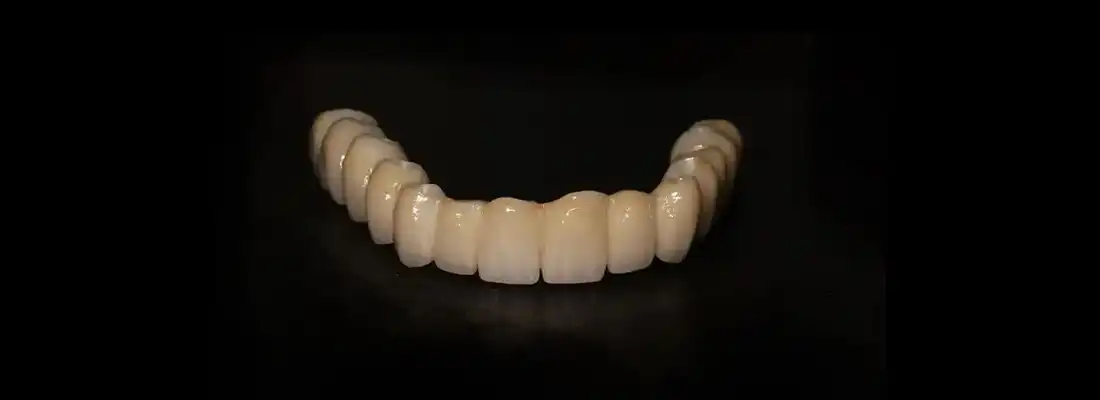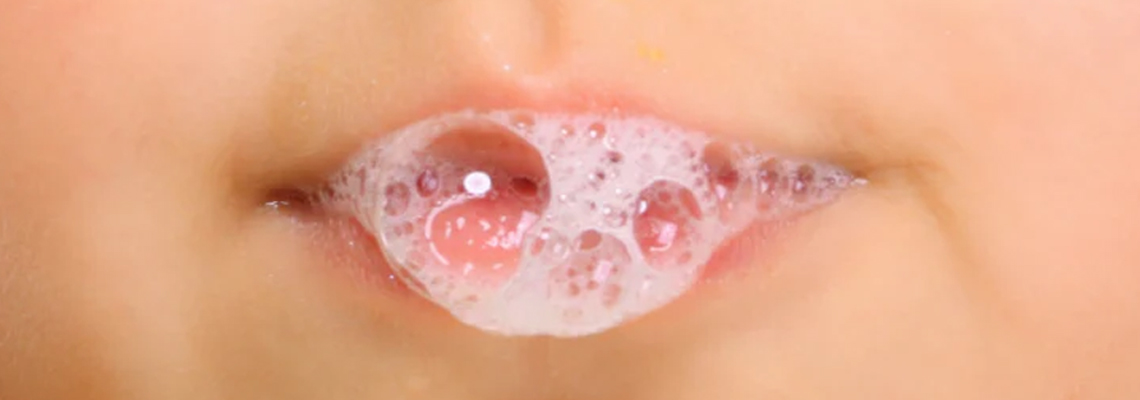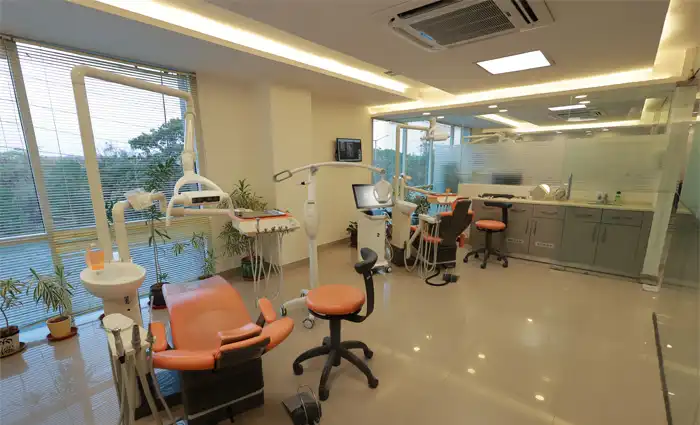A lot of people are missing at least one tooth. Even missing one tooth can make it hard to chew, and obviously, missing a front tooth makes your smile look bad. At Dr. Motiwala Dental Clinic and Implant Centre, we are experts at replacing teeth, and we have many options to meet a wide range of needs.
Even though there are many different ways to replace a tooth, we can put them into a few groups.
1. Removable Tooth Replacement Options
2. Fixed (or non-removable) Tooth Replacement Options
i. Supported by Neighboring Teeth
ii. Supported by Dental Implants
Each choice has some pros that the others don’t have, and each has some cons that we’ll talk about next.
Removable Tooth Replacement Options
“Partials” is a term used in dentistry to describe tooth replacement options that can be taken out and put back in. This is a short form of the technical term RPD, which stands for a removable partial denture. This helps us tell it apart from “dentures,” the common name for the removable dental appliance that replaces all the teeth. A denture is a full set of false teeth that can be taken out. Since we are only talking about replacing one or a few teeth and not all of them, we will only talk about partials.
A partial, also called an RPD, is a piece of dental equipment that replaces missing teeth with “pontics” made of plastic or porcelain (fake teeth). The appliance itself has a frame or base that sits on the gums where the missing teeth are and clasps to the teeth next to them. For partials to work, they do need to be supported by the teeth next to them.
Advantages of Partials
The best thing about partials is that they are cheap. They are the least expensive way to replace missing teeth by far.
Partials have the benefit of being able to replace more than one tooth in a single device, without the cost going up.
It doesn’t take long to make a partial. Within a few weeks, you will have your appliance and “new teeth.” This will take several appointments for molds, scans, and fittings.
Disadvantages of Partials
Unfortunately, partials look the worst in terms of how they look. Most of the time, you can see the clasps or the fake teeth don’t look like they belong with your real teeth.
People often complain that removable partials are uncomfortable and make it hard to chew.
With partials, there is a chance of damage to the teeth that hold them in place, such as cracking and gum recession. This makes a partial last less long in the long run. If you lose a tooth that holds the parts in place, you will need a new one.
There could be changes in speech, like lisping because the base material is thick and takes up space on the tongue.
Non-Removable Tooth Replacement Options
Most of the time, non-removable tooth replacements are better than removable ones because they look better and can’t come loose and make someone look bad. Even though both of these permanent options have their good points, they are very different.
Tooth-Supported Replacement (Bridge)
Most of the time, a fixed partial denture, or FPD, is called a “bridge.” This option only works if there are teeth on both sides of the missing tooth. If the missing tooth is in the back of the mouth, this is not an option. For a bridge to work, there must be an anchor on both ends. The most common type of bridge uses full surface crowns on both of the teeth next to the gap to hold a pontic, or fake tooth, in place. If you are missing one tooth, a bridge will have three units (the single missing tooth plus the tooth in front plus the tooth behind).
A bridge is a great way to replace a tooth if both of the teeth next to it need to be fixed anyway. The crowns that cover these teeth as part of the bridge would take care of any dental work that needs to be done, so you’d be getting two things done at once.
Advantages of a Bridge
The biggest benefit of a bridge is that it is the fastest way to get a permanent tooth replacement (this does not include emergency “flippers” and retainers, which are only used temporarily). The process can take as little as two to three weeks, and you can replace the missing tooth with a temporary bridge in the meantime.
A bridge gives a pretty good look to your teeth. Most bridges today don’t have any silver or gold metal in them.
A bridge has good biting power (as long as the supporting teeth are healthy).
Disadvantages of a Bridge
The price of a bridge is about three to four times that of a partial.
You can’t floss normally because the three (or more) parts of a bridge are connected. Your oral hygiene routine may take a little more time if you have a bridge because you have to clean it in a different way.
A dental implant tooth replacement will last longer than a bridge. This is because the teeth that hold the bridge are more likely to get cavities and gum disease. If one of the teeth that holds the bridge “fails,” the whole thing falls apart.
If the teeth next to it are healthy, a bridge will require that healthy tooth structure be taken away. Dentists don’t usually recommend this.
Implant-Supported Replacement
A dental implant is the only way to replace a missing tooth that doesn’t need to be held up by other teeth. An implant is anchored right into the jawbone and gives the dentist a place to attach restorations. Dental implants are flexible and can be used to replace one or more missing teeth in many different ways. For our purposes, we will think about how a dental implant could replace a single missing tooth.
Advantages of Dental Implant Tooth Replacements
Because the implant is anchored directly into the jawbone, it keeps the natural teeth that are still there safe.
The jawbone around the implant is kept healthy and stimulated by the implant itself. This keeps bones from breaking.
Because a tooth supported by an implant comes out of the gums, it looks the best out of all the ways to replace a tooth.
The best chewing force comes from the support of the jawbone beneath the teeth.
Crowns that are held in place by dental implants last the longest out of all the ways to replace a tooth.
Because the crown is not connected to any other teeth, it can be cleaned just like a natural tooth. You don’t need to change how you clean your teeth.
Disadvantages of Dental Implant Tooth Replacements
Most of the time, dental implants are the most expensive way to replace a tooth.
For dental implant restorations, the implant has to be put into the jawbone through surgery.
Still have questions about missing tooth replacement?
Call Dr. Motiwala’s Dental Clinic and Implant Centre right away to set up an appointment with us. Dr. Motiwala can answer any question you have about replacement options in general and make suggestions based on your situation.
Are You Looking For Dental Implants
Click on the links below to learn more about the approximately $50,000 savings option for Dr. Motiwala’s packages.
- Full mouth dental implants & Cost of Treatment
- Smile Makeover & Cost of Treatment
- Watch 100’s of Testimonials from our International Patients
Make An Appointment!
Please contact us if you have dental difficulties or are interested to know about dental implants and how they might improve your smile. Dr. Motiwala Dental Clinic & Implant Center may be reached at +91 99596 14584. You can also Contact Us by clicking the banner below.























